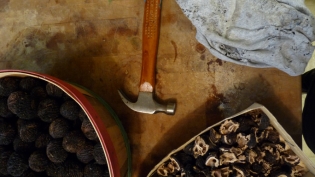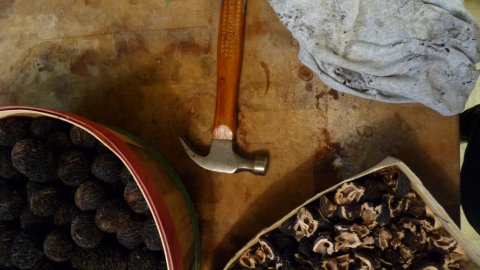How to Find & Harvest Black Walnuts
Black walnuts are in the same family as pecans, hickories and other walnuts. The scientific name of the eastern black walnut is Juglans nigra and it can be found naturally from northern Florida to Canada. Their leaves are pinnate, which means they grow in clusters that look like a large feather.
Ripe black walnuts tend to fall in October and can be collected throughout the fall. The baseball-sized husks will be green to black in varying states of firmness. Even mushy husks can yield good nuts.
Remove the husks as soon as possible. Some people drive over them with a car to loosen them, but we just don some heavy duty waterproof gloves and slice them off with an oyster knife.
Rinse the husked nuts and throw out any that float as this is often an indicator of a bad nut. Spread them in a single layer in a dry, squirrel-free location to cure for 3-6 weeks (they should be completely dry). Try a warm attic or sunny window – they need to dry quickly to prevent mold.
Cured nuts can be stored in their shells for up to a year in a cool, dry place. If you decide to shell them all up front it is a good idea to store the nutmeats in the freezer until use.
You can purchase a fancy black walnut cracker online, but we still prefer an ordinary hammer. Wrap the nut in a rag, pop it with the hammer, and ease the meats out with a nut pick.








